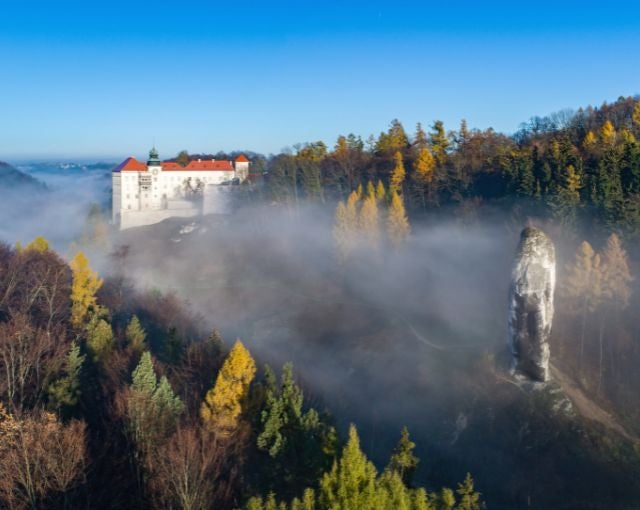
6/11/2024
Starting Point: Kraków
No wonder Krakow attracts tourists from far and wide. One day is not enough to explore this beautiful city with many wonders to admire both in and outside the town. Make sure you get the most of your visit to Krakow!
The Royal City
Naturally, the first place to see is the town itself, dominated by the royal Wawel Castle. The local cathedral was the place of coronation, and often also the last resting place of Polish kings. Unlike other Polish cities, Krakow suffered little damage during WWII, which makes it the best-preserved historical town in Poland. You can admire numerous gates or the renaissance market building Sukiennice in the middle the main square.
Above the Salt
Southeast of Krakow, the town of Wieliczka has one of the oldest salt mines in the world. The extraction of salt from local deposits began in the 13th century, and over the following 700 years, miners cut their way down some 327 metres under the surface. Nowadays, the mine has nine levels with over 245 kilometres of tunnels. The imposing site is on the UNESCO World Heritage List.
Which takes us to the truly unique thing about Wieliczka. In addition to extracting and selling salt, miners also created numerous salt statues and reliefs. You can admire a salt copy of Leonardo’s Last Supper, an elaborate crucifix, or a statue of Pope John Paul II. But the highlight is the Chapel of St Kinga, a huge hall carved in salt dominated by a baroque altar with numerous salt statues. Only five kilometres of the tunnels are open to visitors. The “Tourist Tour” will take you to the most popular places, including the chapel and the salt lakes.
Polish Karst 🌳
About 10 km north-west of Krakow, the Ojców National Park is the smallest national park in Poland, covering two valleys of white limestone rocks with streams in the middle and forests all around. The karst formations are formidable, especially the unique limestone towers. The most famous one bears the name “Hercules’s Bludgeon” and soars 25 metres high. In another place, five such tower-like formations standing next to one another inspired the name “Glove”. There are also numerous caves, such as Jaskinie Ciemna (Dark Cave). The displayed figures of Neandertal hunters point to the fact that it contained traces of Neanderthal settlement. Another cave bears the name of king Wladyslaw Lokietek who allegedly took refuge in it. The park can boast rich flora and fauna, including beavers who are leaving ample evidence of their activity in the valleys.
Eagles’ Nests and More
But that is by far not all! The castles Ojców and Pieskowa Skala are just the beginning of a chain of so-called Eagles’ Nests – castles built in the 14th century by Casimir the Great. The trail continues with the castles of Rabstztyn, Korzkiew, Lipowiec, and many more. Religious travellers might include a trip to Wadowice, the birthplace of Pope John Paul II.
TEXT: Jakub Jukl
PHOTO: Shutterstock.com
The whole article is to be found in the summer issue of the Leo Express Magazine
Share article
0 x
Copy URL
Log into the loyalty program Smile Club
Don't have an account yet?
By logging in I agree with conditions of the loyalty program, processing of personal data and declare that I have reached the age of 16. Cancellation of tickets is only possible to leo credits.


